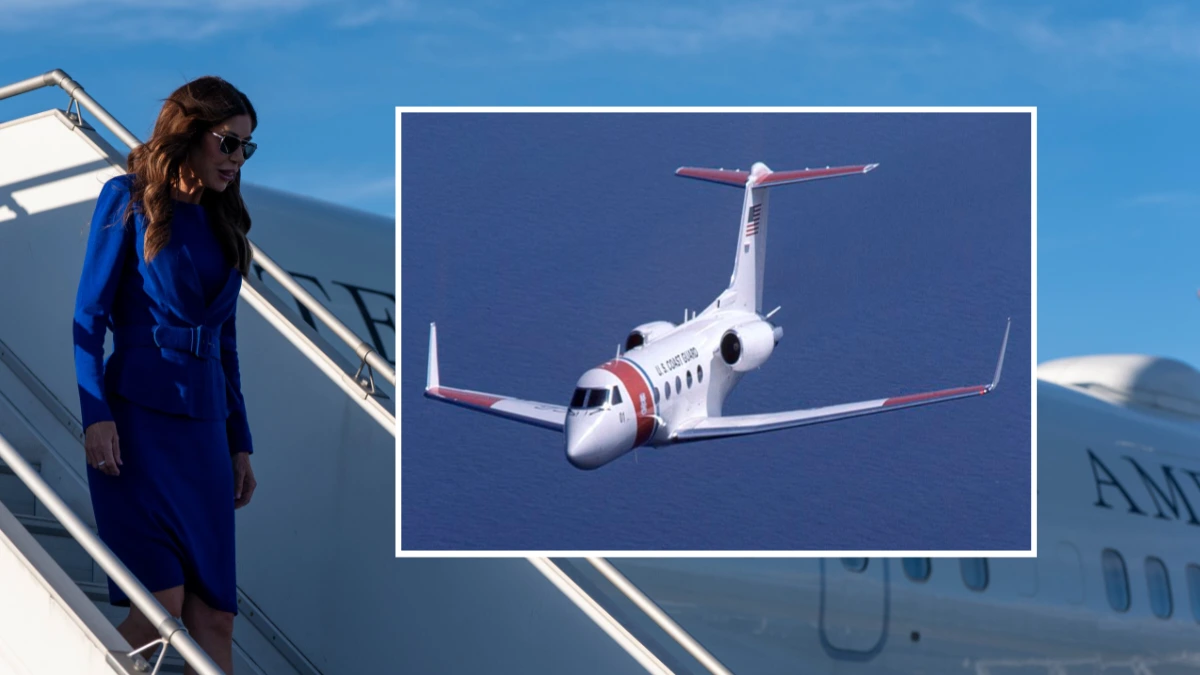WASHINGTON — The Department of Homeland Security has purchased two Gulfstream G700 private jets for Secretary Kristi Noem and senior officials at a total cost of $172 million, raising new questions about spending priorities within the agency.
Documents reviewed by The New York Times and publicly available on a federal procurement site confirm that the US Coast Guard, which operates under the department, finalized a contract with Gulfstream Aerospace earlier this year.
Officials said the aircraft are intended to replace aging planes that no longer meet safety and communications standards.
A department spokesperson described the move as “a matter of safety,” noting that the existing Gulfstream jet was more than 20 years old and “well beyond operational usage hours.”
Still, the purchase has triggered bipartisan scrutiny particularly over why the Coast Guard’s initial budget request for one replacement jet was expanded to include two of the industry’s most luxurious models.
The Coast Guard’s fiscal 2025 budget included a $50 million line item for a new long range Gulfstream V to replace an outdated aircraft used by Noem.
Acting Coast Guard Commandant Kevin Lunday told lawmakers in May that the existing jet’s avionics were “increasingly obsolete” and that new aircraft were necessary to maintain “secure, reliable, on-demand communications.”
However, procurement documents show that instead of a single replacement, the department authorized the purchase of two used Gulfstream G700s a model widely known for its high end features and expansive cabin space.
The total contract value, listed at slightly over $172 million, has raised eyebrows among congressional Democrats. In a letter reviewed by The Times, Representatives Rosa DeLauro of Connecticut and Lauren Underwood of Illinois urged Noem to “clarify the funding source” and explain the decision making process.
“In addition to raising serious questions about your ability to effectively lead an agency whose procurement strategies appear to vary on a whim,” the lawmakers wrote, “the procurement of new luxury jets for your use suggests that the Coast Guard has been directed to prioritize your own comfort above operational needs.”
Aviation procurement experts say that while replacing aging aircraft is standard practice, the scale and model of the purchase warrant closer examination.
“The G700 is a high performance corporate jet designed for private executives, not government field operations,” said Michael Hanley, a defense acquisition analyst at the Brookings Institution.
“For federal agencies, cost effectiveness and mission alignment are supposed to be the guiding principles. Spending over $170 million on two luxury models is unusual, even for executive transport.”
Former DHS budget official Maria LeClair agreed that the acquisition raises transparency concerns.
“When agencies expand contracts beyond approved budget requests, it can create accountability issues. It’s not just about optics it’s about maintaining trust in how taxpayer money is managed,” she said.
The purchase comes at a time when DHS is facing broader scrutiny over its spending and modernization priorities.
The department’s fleet includes several older Gulfstream and C-37 aircraft, many of which have been in service for more than two decades.
According to federal budget documents, the average lifecycle cost for replacing an executive transport jet typically ranges from $40 million to $70 million.
The $172 million price tag for two G700s stands well above that benchmark, even accounting for security modifications and long range capabilities.
Republican lawmakers had earlier allocated approximately $25 billion in new funding for the Coast Guard as part of a broader tax and domestic policy package, including $2.3 billion specifically for aircraft procurement.
DHS officials said part of that funding was redirected to ensure personnel were paid during a recent government shutdown.
But critics argue that the timing of the luxury jet acquisition during a period of fiscal tightening sends the wrong message. Among Coast Guard personnel, reactions have been mixed.
One senior officer stationed in Norfolk, Virginia, who requested anonymity because he was not authorized to speak publicly, said many service members view the purchase as “disconnected from reality.”
“We’re dealing with underfunded maintenance, aging cutters, and stretched crews,” he said. “Hearing that $172 million went to new executive jets is disheartening.”
Others defended the decision, emphasizing operational demands and the need for secure mobility.
“Top level DHS travel isn’t about luxury it’s about readiness,” said retired Rear Adm. Paul Thornton. “The secretary and senior officials must be able to move quickly during crises, and that requires reliable aircraft with secure communications.”
The purchase is likely to face continued oversight from Congress. DeLauro and Underwood have requested a detailed explanation of the funding mechanism and procurement timeline by the end of the month.
Analysts predict the DHS Inspector General may also review the deal, given public concern and the department’s recent history of budget scrutiny.
“If the Inspector General gets involved, expect a full audit of not just this transaction, but of DHS’s broader aviation procurement strategy,” Hanley said.
Meanwhile, Noem’s office has sought to downplay criticism, emphasizing that she has reimbursed the government for past personal use of Coast Guard aircraft and that the new planes will “serve the entire department’s operational mission.”
As DHS prepares to integrate the new Gulfstream G700s into its executive transport fleet, questions remain about the transparency and necessity of the purchase.
Lawmakers across the aisle are calling for clearer justifications, while agency officials maintain that the decision was rooted in safety and mission efficiency.
Whether the $172 million investment proves to be a prudent modernization effort or a symbol of government excess will depend on how the department manages oversight, accountability, and the optics of luxury in a time of fiscal restraint.

